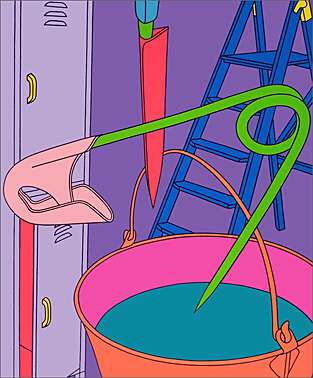so as the stamps have to get to the british public to redice waste, reduce and recycle, i have decided to do some basic research into these steps to help gain a better understanding and to also find influence of ideas etc i can use for the stamps...
http://www.recycling-guide.org.uk/facts.html
Recycling Facts and Figures...
UK households produced 30.5 million tonnes of waste in 2003/04, of which 17% was collected for recycling (source: defra.gov.uk). This figure is still quite low compared to some of our neighbouring EU countries, some recycling over 50% of their waste. There is still a great deal of waste which could be recycled that ends up in landfill sites which is harmful to the environment.
Recycling is an excellent way of saving energy and conserving the environment. Did you know that:
- 1 recycled tin can would save enough energy to power a television for 3 hours.
- 1 recycled glass bottle would save enough energy to power a computer for 25 minutes.
- 1 recycled plastic bottle would save enough energy to power a 60-watt light bulb for 3 hours.
- 70% less energy is required to recycle paper compared with making it from raw materials.
Some Interesting Facts
- Up to 60% of the rubbish that ends up in the dustbin could be recycled.
- The unreleased energy contained in the average dustbin each year could power a television for 5,000 hours.
- The largest lake in the Britain could be filled with rubbish from the UK in 8 months.
- On average, 16% of the money you spend on a product pays for the packaging, which ultimately ends up as rubbish.
- As much as 50% of waste in the average dustbin could be composted.
- Up to 80% of a vehicle can be recycled.
- 9 out of 10 people would recycle more if it were made easier.
Aluminium
- 24 million tonnes of aluminium is produced annually, 51,000 tonnes of which ends up as packaging in the UK.
- If all cans in the UK were recycled, we would need 14 million fewer dustbins.
- £36,000,000 worth of aluminium is thrown away each year.
- Aluminium cans can be recycled and ready to use in just 6 weeks.
Glass
- Each UK family uses an average of 500 glass bottles and jars annually.
- The largest glass furnace produces over 1 million glass bottles and jars per day.
- Glass is 100% recyclable and can be used again and again.
- Glass that is thrown away and ends up in landfills will never decompose.
Paper
- Recycled paper produces 73% less air pollution than if it was made from raw materials.
- 12.5 million tonnes of paper and cardboard are used annually in the UK.
- The average person in the UK gets through 38kg of newspapers per year.
- It takes 24 trees to make 1 ton of newspaper.
Plastic
- 275,000 tonnes of plastic are used each year in the UK, that’s about 15 million bottles per day.
- Most families throw away about 40kg of plastic per year, which could otherwise be recycled.
- The use of plastic in Western Europe is growing about 4% each year.
- Plastic can take up to 500 years to decompose.
These facts are really interesting and i could look at possibly illustrating and communnicating the facts in a way that would be noticable on a stamp, seems a good idea.
ecycling is one of the best ways for you to have a positive impact on the world in which we live. Recycling is important to both the natural environment and us. We must act fast as the amount of waste we create is increasing all the time.
The amount of rubbish we create is constantly increasing because:
- Increasing wealth means that people are buying more products and ultimately creating more waste.
- Increasing population means that there are more people on the planet to create waste.
- New packaging and technological products are being developed, much of these products contain materials that are not biodegradable.
- New lifestyle changes, such as eating fast food, means that we create additional waste that isn’t biodegradable.
 Environmental Importance
Environmental Importance
Recycling is very important as waste has a huge negative impact on the natural environment.
- Harmful chemicals and greenhouse gasses are released from rubbish in landfill sites. Recycling helps to reduce the pollution caused by waste.
- Habitat destruction and global warming are some the affects caused by deforestation. Recycling reduces the need for raw materials so that the rainforests can be preserved.
- Huge amounts of energy are used when making products from raw materials. Recycling requires much less energy and therefore helps to preserve natural resources.
 Importance To People
Importance To People
Recycling is essential to cities around the world and to the people living in them.
- No space for waste. Our landfill sites are filling up fast, by 2010, almost all landfills in the UK will be full.
- Reduce financial expenditure in the economy. Making products from raw materials costs much more than if they were made from recycled products.
- Preserve natural resources for future generations. Recycling reduces the need for raw materials; it also uses less energy, therefore preserving natural resources for the future.
Just looking at some basic imagery for reduce, reuse recycle. seems to be the three green recycling arrows as a strong image running throughout what i am finding. maybe i could incorporate this somehow?
UK RECYCLING LOGO
man and trash can. strong imagery for british recycling/keeping tidy
KEEP BRITAIN TIDY CAMPAIGN...
GREEN/WHITE COLOUR SCHEME ON THE INTERNET
RECYLING PLASTIC - IMAGERY...
PAPER IMAGERY...
GLASS IMAGERY...





















































 Environmental Importance
Environmental Importance Importance To People
Importance To People





















